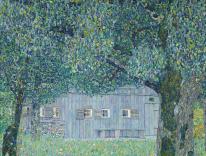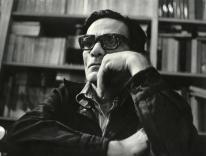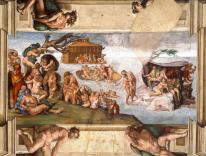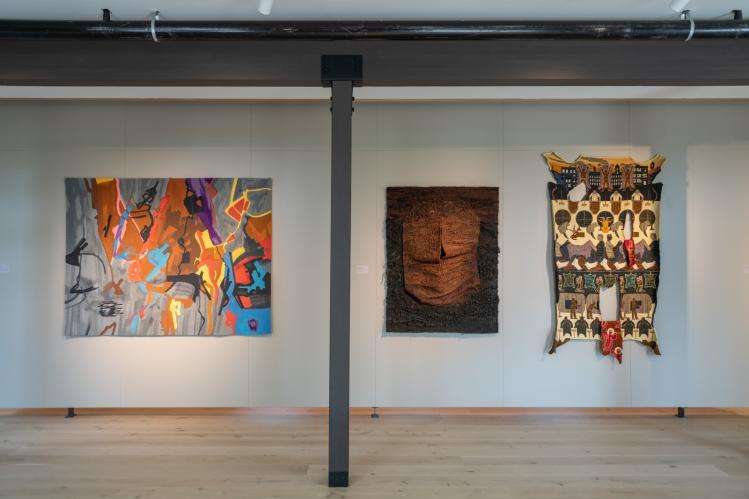
“Yes, but is it art?” is a question that tends to keep artists up at night. It implies a kind of judgment on works that depart from convention, that veer from the already-seen. Despite shifting definitions, most people tend to cling to some concept or other; theories of art become problems for artists because the intent of these theories is often to exclude. But the art world has always included non-traditional media that critics and viewers are unsure how to classify. Some seem more like fads—rubber stamp art, xerography and holography in the 1970s—or social practice—NFTs and images created through artificial intelligence today. What counts as art, and what doesn’t? Only time will tell.
Most non-traditional works that enter the mainstream art world do so either on the strength of a noted artist making it—for instance, Picasso and collage—or by a sizable number of established artists taking up the practice, as in the case of photography and graffiti. These last two only entered museum collections after they ceased to be viewed as mere technical proficiency or urban blight. The behavior of art collectors—many of whom are aware that the works they purchase may never receive recognition—also plays a role. Risk-taking is as much a part of buying art as making it. An artist’s say-so is no guarantee of value; collectors vote on what is art with their money.
Today, another medium is knocking at the door of acceptance: artists’ tapestries, that is, woven representations designed by artists and intended to be hung on walls, usually large ones. Artists whose works become tapestries—like Alan Magee, April Gornik, or Kiki Smith—don’t actually weave the pieces themselves. Instead, they rely on an automated version of a traditional jacquard loom. But this shouldn’t be disqualifying: many contemporary artists, especially sculptors, rely on “fabricators” to produce the works they design.
This summer saw the opening of three distinct exhibitions of artists’ tapestries. The first, at the Columbus Museum of Art in Ohio, displays six tapestries originally designed in 1515-16 for the Vatican’s Sistine Chapel using “cartoons” by the Italian artist Raphael. The images, depicting events from the lives of St. Peter and St. Paul, were actually woven during the seventeenth century, then hung in a church in Dresden, Germany. The second exhibition features a series of six other large tapestries, entitled “The Vanity of Small Differences,” by the contemporary artist Grayson Perry (b. 1960). Installed at Salisbury Cathedral in Salisbury, England, the work tells an updated version of William Hogarth’s eighteenth-century series “The Rake’s Progress.” The third show, “Threading the Needle,” is on view at The Church, an arts center in Sag Harbor, Long Island. It consists of about fifty objects by different artists. Most are woven—from wool, wire, cotton, hemp, even Coke can tabs and human hair—into either three-dimensional objects or two-dimensional images. Some are abstract, others representational.
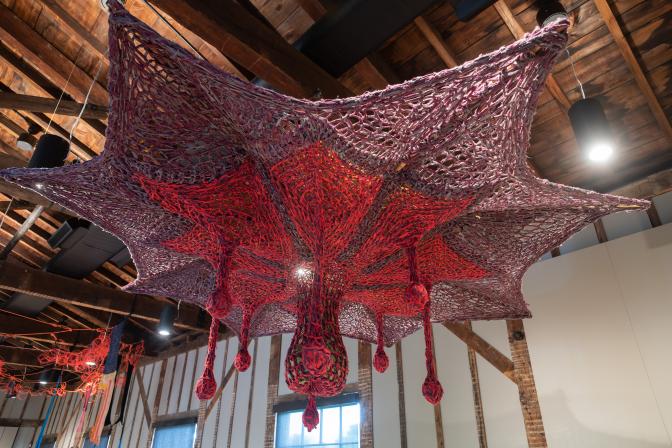
If it’s surprising to have three large-scale tapestry exhibitions at the same time, that’s in part because it is rare to see even one. “There has been a bias against anything to do with craft—the handmade,” said Sara Cochrane, chief curator at The Church. “There also has been a strong association of weaving, beading, dyeing fabric, and quilting with women’s work, so this type of artwork undermines the idea of male genius.” Some of the artists featured in “Threading the Needle” are actually men who, Cochrane explained, are using tapestries and other fiber-based artworks “as a way to talk about their outsider status.” For female artists, their use of tapestries constitutes a feminist statement. (The same was also true of a 2012 Kiki Smith tapestry show at the Neuberger Museum of Art in Purchase, New York.)
Artist-designed tapestries are by no means new, and their history goes back to antiquity. Tapestries are most often associated with the Middle Ages and Renaissance, when their imagery typically represented stories from mythology (like the unicorn tapestries at the Met Cloisters in New York, for example) and the Bible. They served many purposes, including theological instruction, spiritual devotion, and architectural adornment. (Insulating and dampening sound in drafty chambers was an added benefit.) European tapestry factories did not disappear after the Renaissance, though demand for their products did drop considerably. During the latter part of the nineteenth century, the British Arts & Crafts movement, inspired by the Middle Ages and led by William Morris, revived artist-designed tapestries, turning to pre-Raphaelite painters like Edward Burne-Jones to help produce their imagery.
In the early twentieth century, tapestry producers sought to infuse new life into an old medium by soliciting contemporary artists for new images or securing licenses for woven reproductions. Wealthy art collectors such as Albert Barnes, J.P. Morgan, and George Vanderbilt traveled to Europe and returned with tapestries by artists like Matisse and Picasso. These works either still hang on the walls of their homes, or have been donated to museums, where they are often kept in storage.
The movement to produce artists’ tapestries continued in the post-war era with even greater intensity. In 1968, the Charles Slatkin Gallery in New York City commissioned a number of artists to supply images for editions of tapestries (under the banner of Modern Master Tapestries), which included Ellsworth Kelly, Roy Lichtenstein and Robert Indiana, and Andy Warhol. Two familiar Warhol images were used: “Flowers” and “Marilyn Monroe.” For a time after the artist’s death in 1987, the Warhol Foundation licensed other images as part of a “rug program,” each object selling for between $400 and $1,500, depending on size.
What did Warhol and his contemporaries think of tapestries? Did they consider them “art” on par with their other works? We don’t really know. Matt Wrbican, the former registrar at the Andy Warhol Museum and an authority on the artist’s life, stated before he died in 2019 that Warhol “was a collector of decorative arts. He had an enormous number of Navajo rugs and blankets, as well as Native American pottery and baskets. But maybe he looked at tapestries as one more thing to put his name on.” Roy Lichtenstein may have had a similar attitude—they were either reproductions or decorations, nothing more. “I think Lichtenstein was interested in the notion, as a Pop extension of imagery into a wider, less precious or costly realm,” said Jack Cowart, executive director of the Roy Lichtenstein Foundation. “But his involvement was limited, and seemed only in response to people and tapestry makers soliciting him.”
Like Lichtenstein and Warhol, many contemporary American artists remain lukewarm at best about seeing their images on tapestries and rugs. Likewise, the galleries representing them don’t want to invest much in advertising or selling woven reproductions. Yet some producers, like Magnolia Editions of Oakland, California, continue working with star artists—Alex Katz, Chuck Close, Guy Diehl, April Gornik, William Kentridge, Robert Kushner, Mel Ramos, Gerhard Richter, Kiki Smith, and William Wiley among them. Company founder and director Donald Farnsworth said that he wants “to give the artists control over the process” and thus regularly brings New York artists out to California so that they can inspect the colors, the weaves, and the overall quality of each tapestry. The process is intensive, and the works aren’t cheap; some of Magnolia’s tapestries cost upwards of $150,000 or more.
Perhaps the question of whether artists’ tapestries “count as art” is unanswerable. What makes them special, though, is the place where they’re exhibited. “The fact that Grayson Perry’s exhibit is at the Salisbury Cathedral instead of at an art gallery or museum is telling,” said artist April Gornik, who has produced five tapestries with Magnolia Editions. “What it says is that these works are worth seeing, but they need to be seen in a special place,” presumably where they are viewed not as art but as something different—maybe even something more.
If artists’ tapestries remain in a kind of limbo among contemporary artists and gallerists, it’s heartening to see more audiences around the world showing up to view and engage deeply with this ancient form. In the end, whether they are considered “real works of art” matters much less than the fact that even after all these millennia they’re still being produced, sold, and most importantly, enjoyed.
Please email comments to [email protected] and join the conversation on our Facebook page.
Share
Previous Story
Poem | Soul Deep
Next Story
Good Samaritans?
